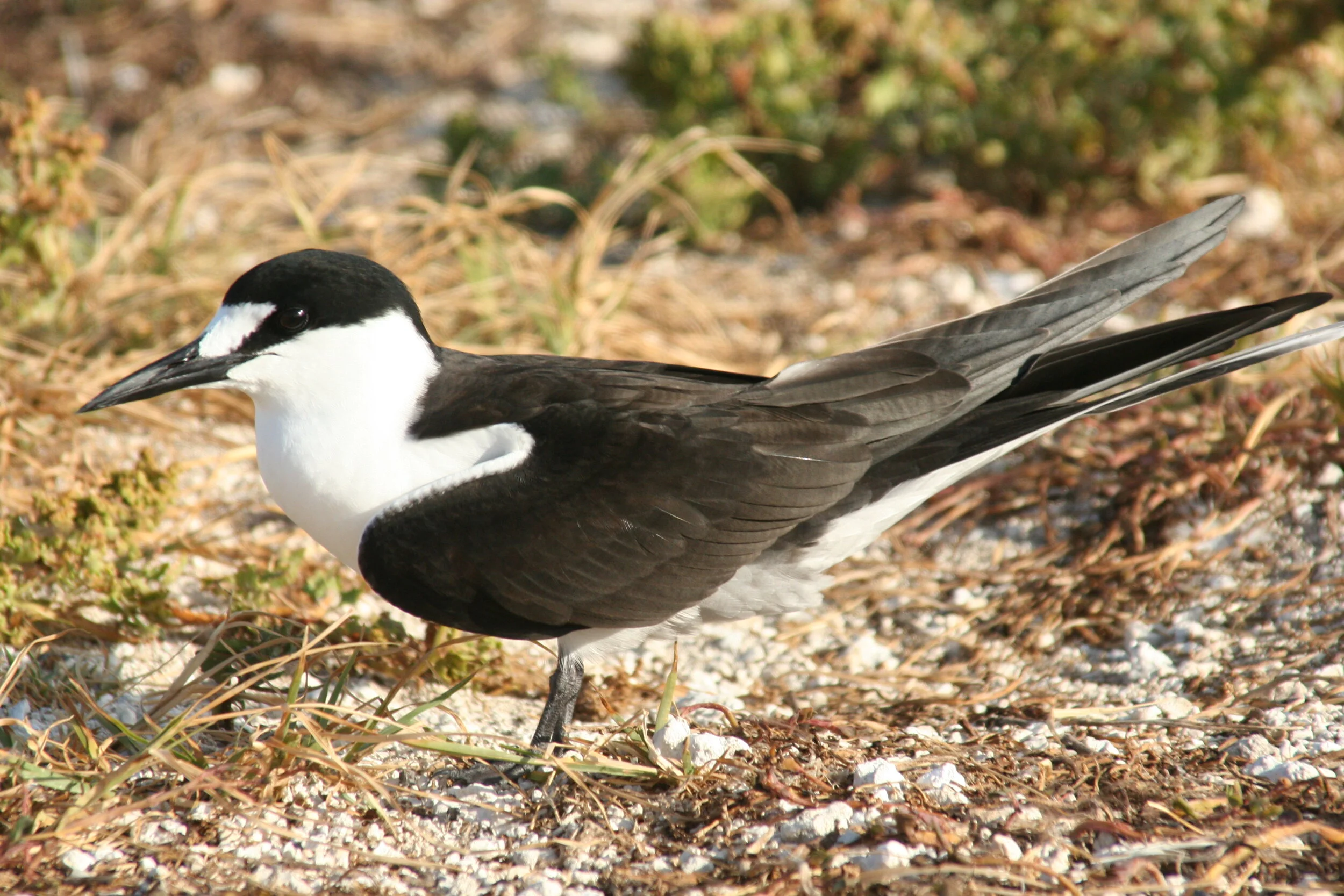Sooty Tern (Onychoprion fuscatus)
Since the early 1800’s, large numbers of Sooty Tern eggs were removed from nests. Considered a delicacy in the Seychelles, between 8,000 to 14,000 eggs were taken each year. In addition to egg collection, these ground-nesting birds were also threatened by rodents and cats (introduced by settlers). As a result, the Sooty Terns abandoned breeding on Cousine Island.
After concentrated efforts to restore the island — including the removal of rodents — Sooty Terns have returned to breed on Cousine Island for the first time in over 30 years.
The sooty tern (Sterna fuscata) is a widespread tern of the tropical and subtropical waters of the Indian, Pacific and Atlantic oceans. It is one of the true oceanic tern species as they spend most of the year at sea only returning to land during the annual breeding season, which falls between May-September. Each pair raises a single chick following an incubation period of 28-30 days.
This species can often be seen flying in pairs or small groups during the day and their distinct call can be heard throughout the breeding season.
Sooty terns reach an average length of 40 cm and have a wingspan of 82-94cm. This bird is often confused with the bridled tern due to their similar appearance, but is distinguishable by its larger size and darker colouration on the upper side of the body.
Sooty terns were one of the most exploited seabirds in the Seychelles. The eggs of this species are a traditional food delicacy and have been harvested in large numbers across many of the islands.
Historically, Cousine island recorded up to 20,000 breeding pairs. However, since 1963 the colony was deserted due to the overharvesting of eggs. In August 2003, after a 30-year absence, 150 breeding pairs were discovered on the island. Since then they have continued to breed on Cousine each year, although numbers do fluctuate annually with only 100 pairs recorded in 2017. Although the harvesting of eggs has been regulated by the Seychelles government and subjected to an environmental tax, poaching may still occur. Each year, the conservation team closely monitors the colonies to minimise the chance of any poaching activity during the breeding season. All sooty tern fledglings are given identity rings for continued research of the species.


